The New York Rangers appear to have made a quantum leap in 2021-22, with new leadership in the front office and behind the bench re-shaping and nurturing a talented roster into a playoff contender as the club’s rebuilding efforts of nearly four years have come into focus.
At 23-10-4, there haven’t been a lot of reasons for hand-wringing. Nevertheless, it remains difficult to look back at one recent personnel decision and not worry about how it might limit the Blueshirts’ potential as championship contenders into the near future.
That would be the offseason trade of right wing Pavel Buchnevich to the St. Louis Blues for salary cap purposes. The move garnered plenty of blowback in the immediate aftermath, seemed less lopsided when the principle return in the trade started to play well, and has come back into question as Buchnevich has thrived with his new team while his old one attempts to work around a hole in the top-six forward corps.
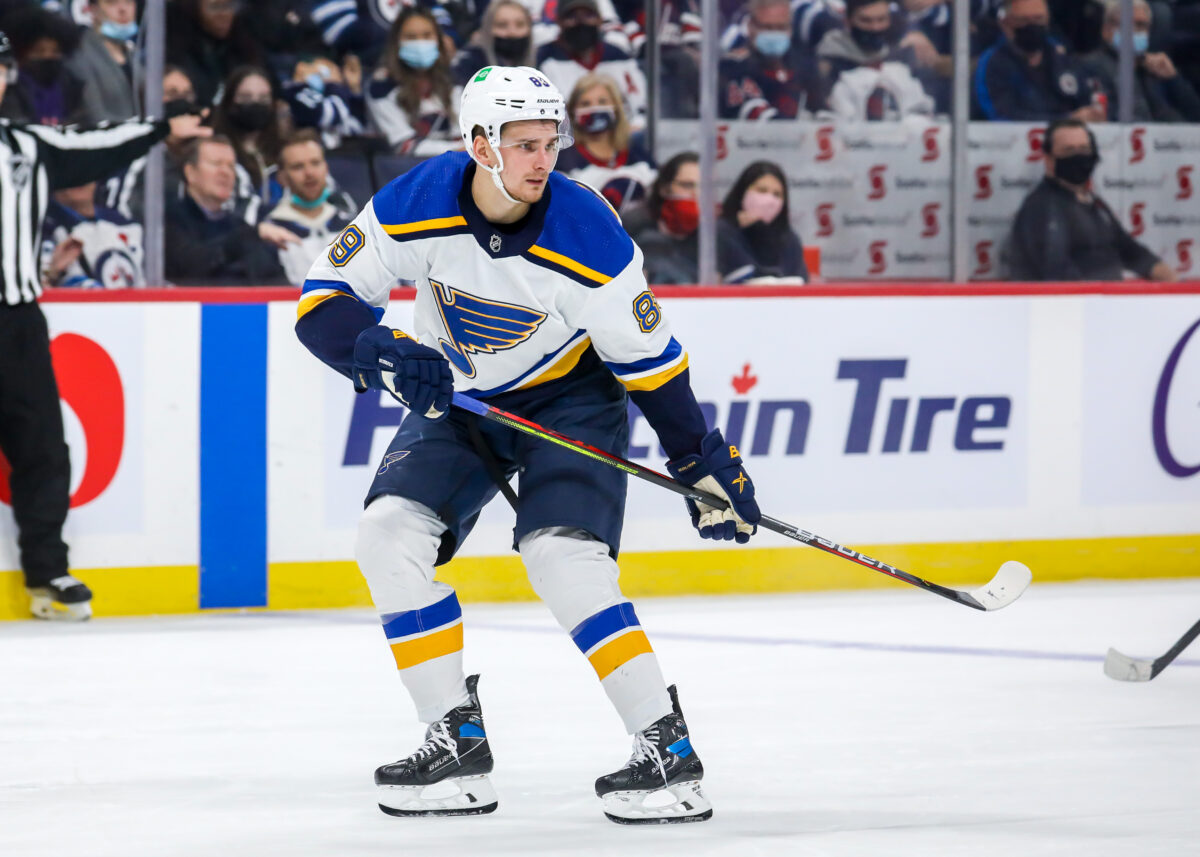
Contrary to simplistic social media outrage, the decision to deal Buchnevich was the product of a complex situation that first-year general manager Chris Drury was facing. In the end, though, it’s fair to render a verdict on all of a team’s personnel moves. A judgment of this one is of course premature, but at the moment, the Rangers have to be crossing their fingers that the results don’t get worse.
Buchnevich’s Development Continuing With Blues
It’s unlikely that the Blueshirts had any illusions about Buchnevich failing to continue to produce with the Blues, but they’ve watched as the 26-year-old has piled up 33 points in 32 contests. Buchnevich, who’s recorded nine goals and 15 assists in his last 17 games, has thrived for the 21-10-5 Blues on the top line with Ryan O’Reilly and Ivan Barbashev.
The sixth-year player’s outstanding all-around game, which started to fully emerge last season when he totaled 20 goals, 28 assists and a plus-12 rating, has only gotten better since departing. Buchnevich is a plus-16 and boasts a 52.5 Corsi for percentage and 52.5 expected goals for mark, with St. Louis scoring 26 goals and giving up only 11 with Buchnevich on the ice at 5-on-5 (courtesy naturalstattrick.com).
So, to summarize: The Rangers sent away someone they drafted in the third round in 2013 and developed into an outstanding two-way player, whose offensive game is still rising and is theoretically about to enter his prime. As for the Blueshirts’ return on the trade, the jury is out and likely will be for some time.
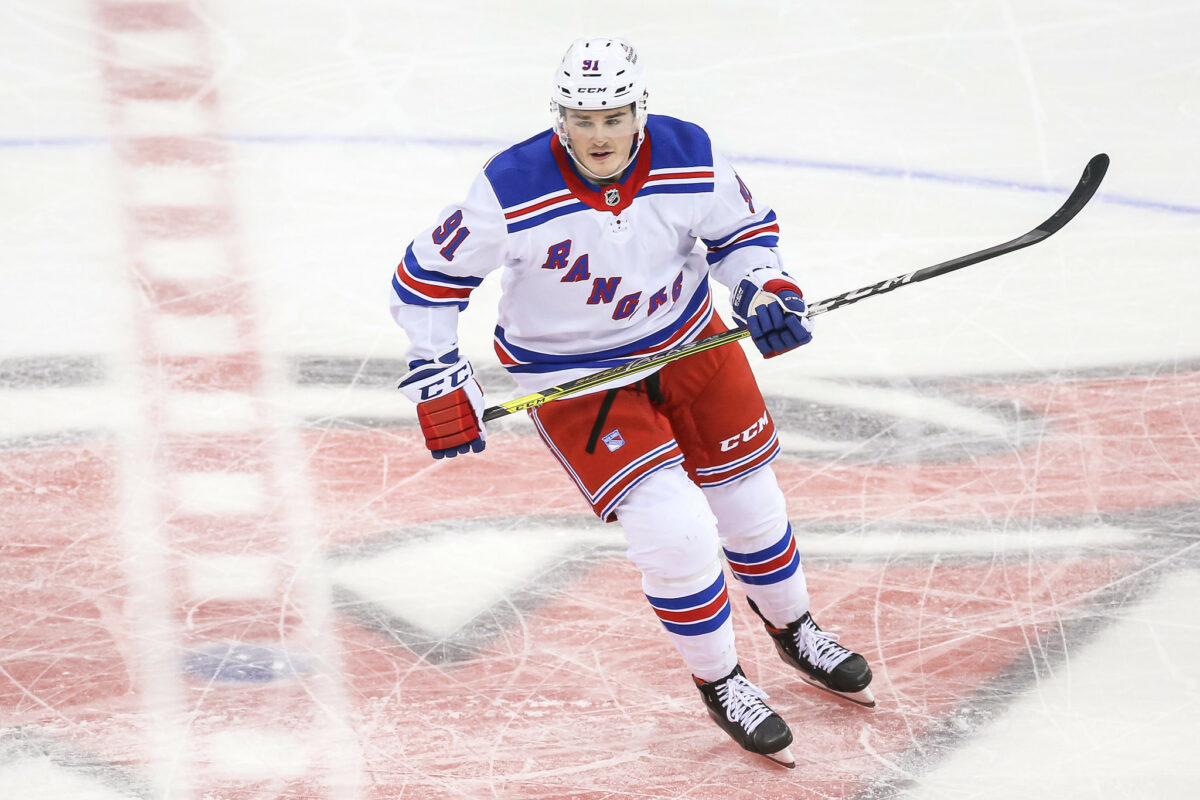
That would be 25-year-old power forward Sammy Blais, who despite his lack of offensive production was making a key contribution on the ice with his physical play and off of it with his well-liked personality before suffering a season-ending knee injury Nov. 14. The Rangers, who had been playing Blais at right wing on their top line with Chris Kreider and Mika Zibanejad, also received a 2022 second-round pick in the trade.
Buchnevich’s departure, Blais’ injury and the ugly exit of Vitali Kravtsov has left a gaping hole at right wing, one the Rangers have been able to maneuver around with the next-man-up mentality that has played a key role in their resurgence this season. However, relying on Barclay Goodrow, who’s much better in a bottom-six role, and Dryden Hunt isn’t a long-term fix. As a result, Drury might need to go out and add a skilled forward at the deadline – similar to the one he traded in July.
So the GM blew it, right? The answer is hardly that simple. Dissatisfaction with the deal might not have been limited to the fan base, as Buchnevich was a popular player with his teammates. Yet not one person among those voices was in Drury’s position – that was, facing an onrushing salary-cap crunch as the team’s young talents were methodically beginning to reach the end of their entry-level contracts.
Related: 3 Reasons the Rangers Are 2022 Stanley Cup Contenders
The conundrum was Drury’s to solve, and the fact is the math just didn’t work. Buchnevich, a restricted free agent at the time of his trade west, signed a four-year contract with an annual average value of $5.8 million with St. Louis. The Rangers locked down star defenseman Adam Fox and No. 1 center Mika Zibanejad with big extensions this offseason, and they face looming raises for forwards Kaapo Kakko this summer and Alexis Lafreniere the next. The club is also trying to figure out a way to keep second-line center Ryan Strome, which may prove impossible with the pending unrestricted free agent set to cash in in the offseason.
So the argument can be made that Drury was in a no-win situation. Paying big money to a winger when the Rangers appeared to have plenty of veteran depth at the position and high-end youth on the way seemed untenable for an organization that continues to be very thin down the middle. The GM, also tasked with making his roster tougher and grittier, attempted to kill two birds with one stone and used an unavoidable cap casualty to address that need and bring in the big-hitting Blais.
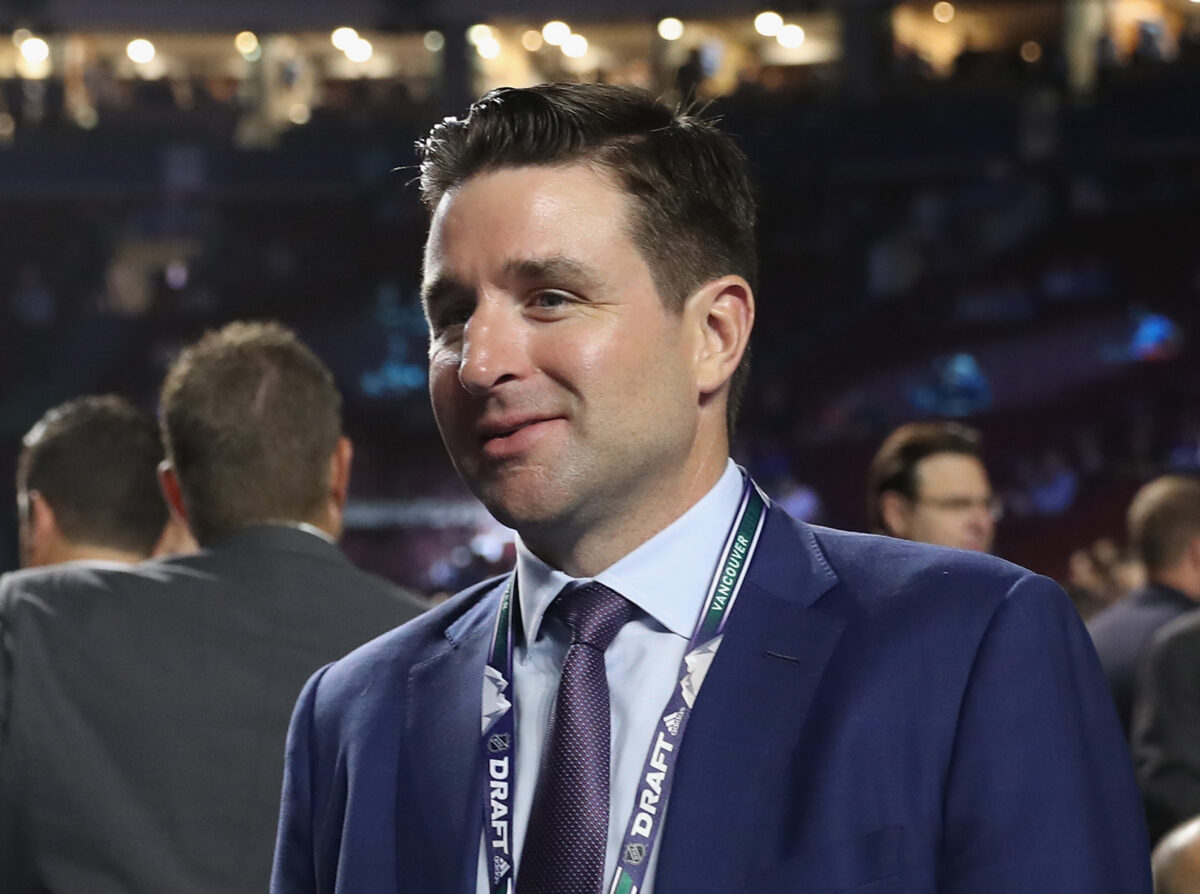
The unspoken hope when the deal was made, of course, was that the kids’ eventual rise would make the trade of Buchnevich a footnote.
That logic might start to fall apart over time, however. Again, there probably wasn’t a realistic alternate course of action Drury could have taken, but the problem is this – in remaining justifiably committed to Kakko and Lafreniere, it’s possible that the Rangers may have ended up choosing the wrong young forwards to build around. Could Buchnevich – gasp! – end up being better than both of them?
No general manager would trade No. 1 or No. 2 overall picks still on ELCs, especially when a pandemic hinders the critical early years of their development. And it’s certainly far too early to assess what Kakko and Lafreniere will develop into.
Kakko, Lafreniere Haven’t Matched Buchnevich’s Contributions
Progress with both players, however, has been halting. To be sure, there have been strides over the past two seasons, but more of that seems to come in the form of “positive signs” – strong play in their own end, engaged efforts in the offensive zone, conscientious all-around work at even strength – than actual production.
What Kakko and Lafreniere haven’t been are immediate impact players, as some top-of-the-draft picks tend to be. Both have suffered through numerous growing pains. Yet at some point, the Rangers need the light go on for each player. At some point, the primary metric for Kakko and Lafreniere will be how much scoring they generate. The Rangers drafted both wingers to eventually become centerpieces of their offense.
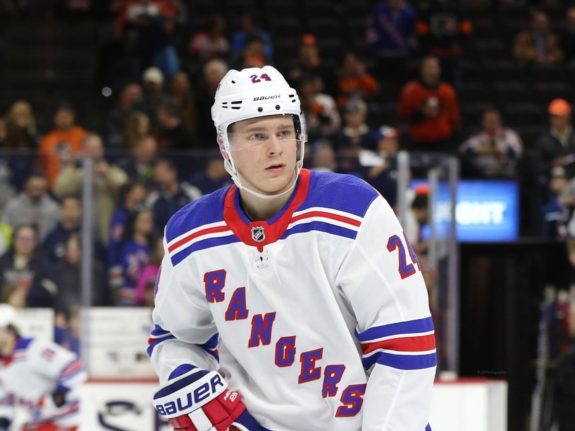
For point of comparison, Jack Hughes, chosen first over Kakko in 2019 by the New Jersey Devils, has broken through in 2021-22, recording 20 points in 19 games, exhibiting the world-class skills that the Devils believed would allow him to develop into their franchise player in short order. Kakko has totaled five goals and eight assists this season, and while he’s played relatively well, his progress hasn’t been nearly as pronounced as that of Hughes.
Likewise, Lafreniere, with whom a portion of the fan base seems utterly disappointed because he hasn’t proven to be Connor McDavid, Auston Matthews or Jack Eichel out of the gate, has shown flashes of what he could become. Also like Kakko, however, those have been interspersed with extended periods of invisibility.
It’s crucial to keep pointing out that both kids’ young careers are products of the pandemic – Kakko’s rookie season cut short due to the sweeping lockdowns of COVID’s early days, and Lafreniere’s limited to 56 games last season. The idea that the Rangers could have given up on either player because they weren’t instant superstars in such an environment is the kind of thinking that would cost any GM his job.
The Rangers had a cap issue and a grit problem last offseason. Buchnevich needed to be re-signed to a pricey extension, depressing his trade value. Multiple appealing offers for him apparently didn’t materialize, so Drury took what might have been the best one out there, adding size even if he knew he was giving up more talent than he was getting back.
Buchnevich, however, isn’t making it easy to swallow that right now, delivering performances like Friday’s two-goal, one-assist effort in a 5-1 victory over the Washington Capitals. He’s tied for second on the Blues in points, is second with a plus-16 rating, kills penalties (which he also did in outstanding fashion last season with the Rangers) and brings an upbeat and positive influence to the dressing room. The Russia native’s stats the past two seasons: 33 goals, 49 assists and a plus-28 rating in 87 games.
Sounds just like the kind of expectations a team would have for a No. 1 or No. 2 overall draft pick, doesn’t it?
Will Buchnevich Prove to Be Better Than Kakko, Lafreniere?
The Rangers will continue to be patient and nurturing with their two prized wing talents, neither of which is old enough to legally buy a drink yet. However, the fate of the club’s concerted rebuilding effort likely hinges on Kakko and Lafreniere more than any other players brought in since the project began in February 2018 (OK, Fox is a noted exception). What a team does with multiple high first-round picks in a short span prominently determines its fate for the next decade or more.
So the pressure for both to become stars does exist and will start to increase, even if it’s not overwhelming right now. Kakko and Lafreniere were the obvious selections when the Rangers chose in 2019 and 2020, ones that any GM would have made had they been in the since-fired Jeff Gorton’s shoes at the time.
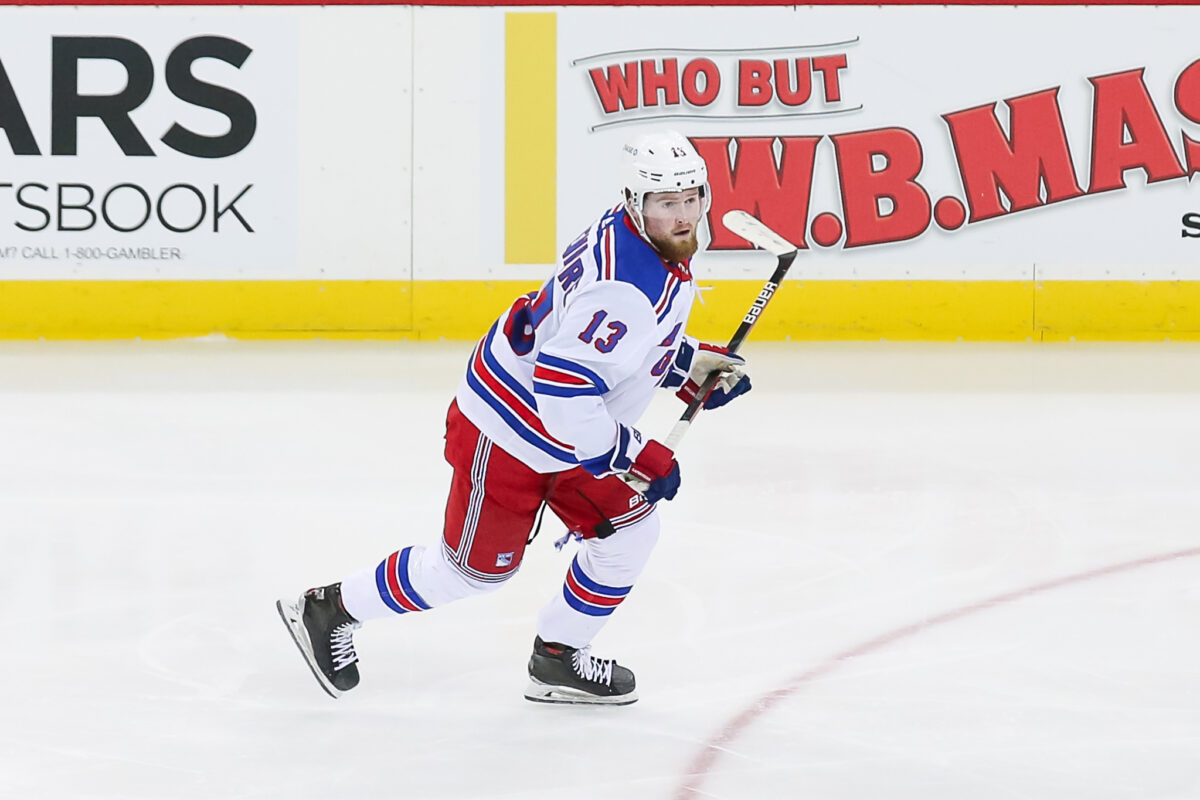
Adding to that pressure, though, is the 75th overall pick in the 2013 draft who’s now wearing a Blue Note on his chest and performing like a rising star for a Stanley Cup hopeful in the Gateway City, setting what seems to be an ever-higher bar for the Rangers to replace his contributions. Will Buchnevich, sent away in part so the Rangers could pay Kakko and Lafreniere, end up being the better player, not just the better value?
For the sake of the Rangers’ future championship aspirations, and perhaps his own legacy running his hometown team, Drury had better hope not – especially when he might not have had any real choice in the matter.
